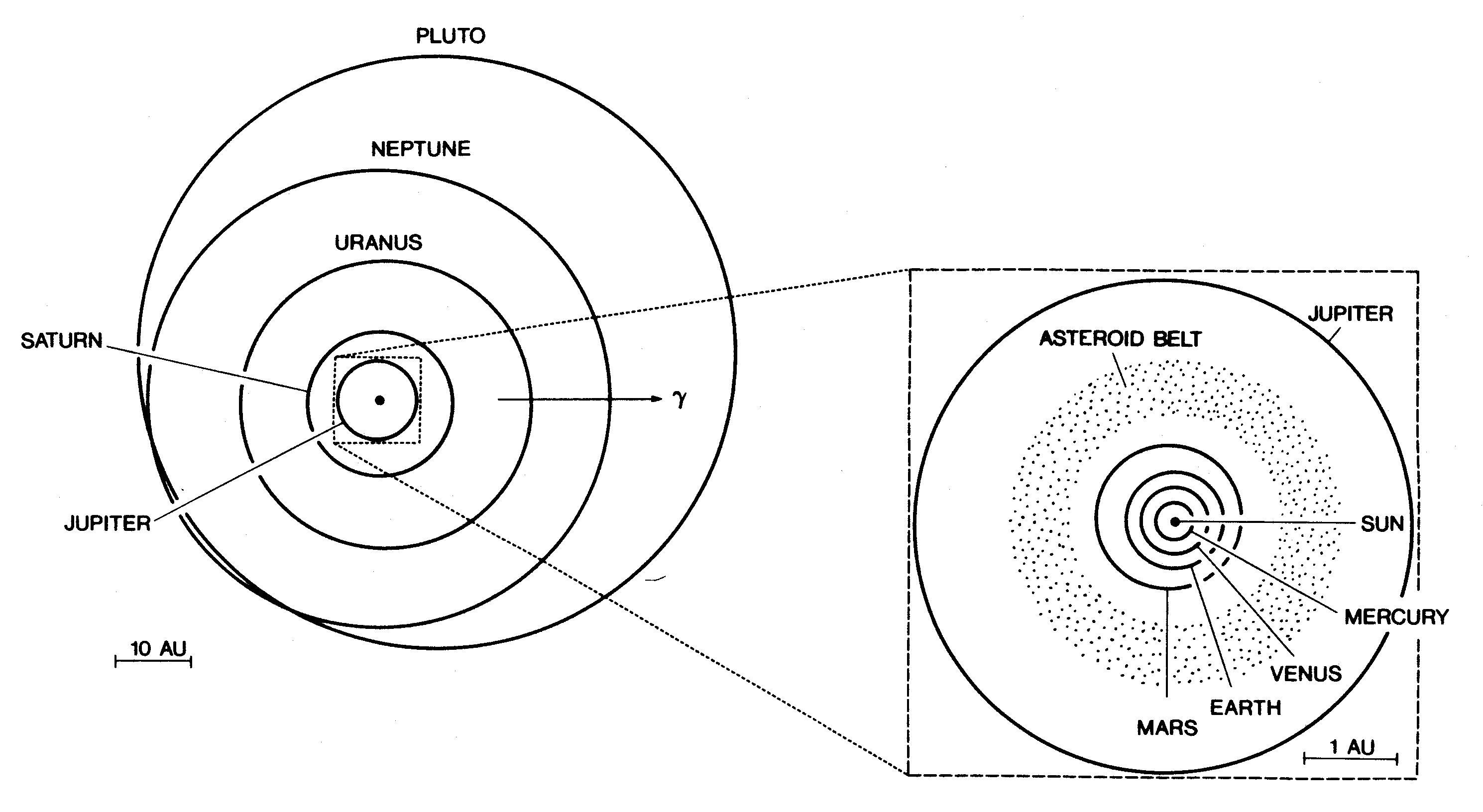 slide1 ==> 1.1: Orbits of the planets and asteroids about the sun. The orbits of Mars and Pluto are clearly de-centred
slide1 ==> 1.1: Orbits of the planets and asteroids about the sun. The orbits of Mars and Pluto are clearly de-centred
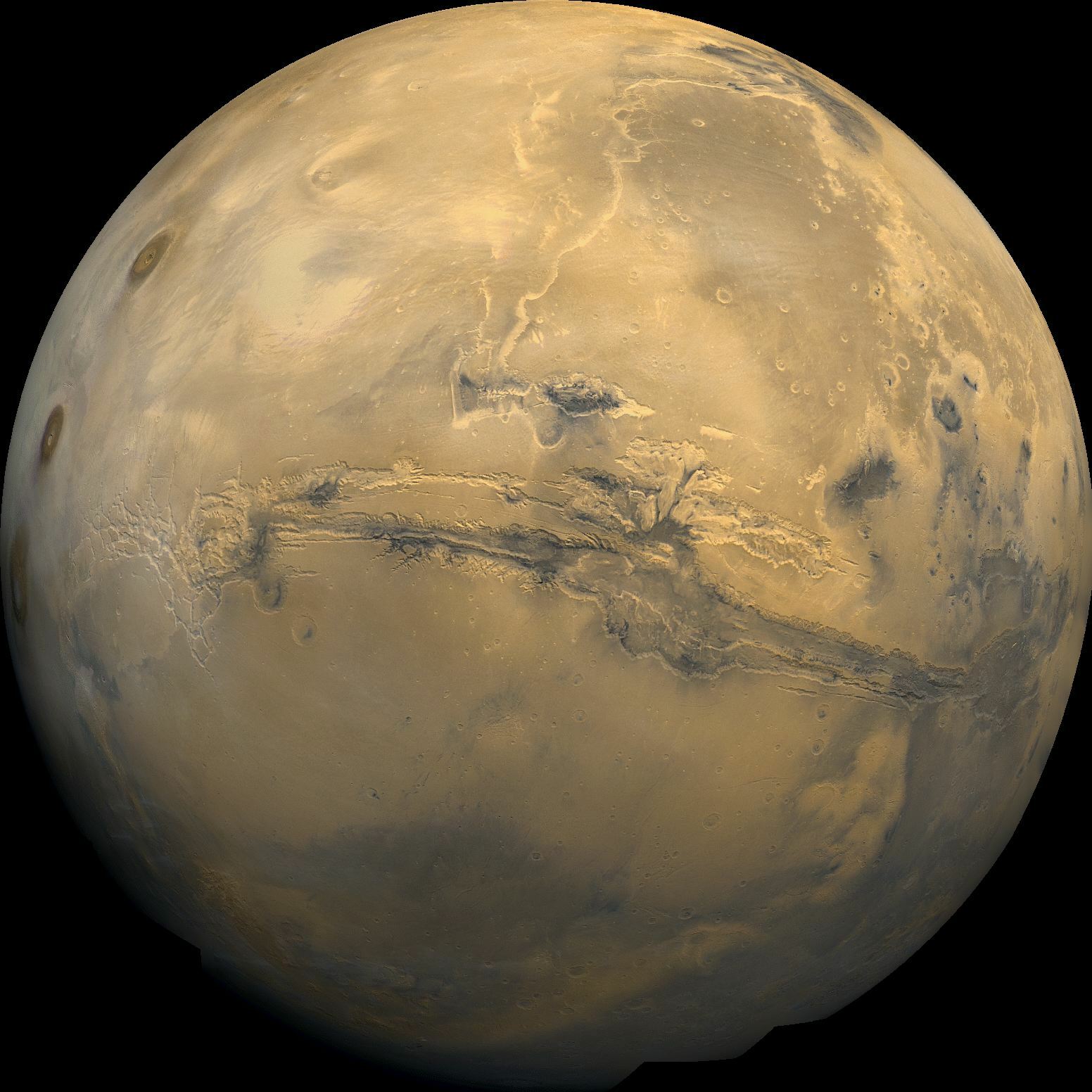 slide2 ==> 1.2: Global view of Mars, with Valles Marineris in the centre and volcanos near the left limb (NASA)
slide2 ==> 1.2: Global view of Mars, with Valles Marineris in the centre and volcanos near the left limb (NASA)
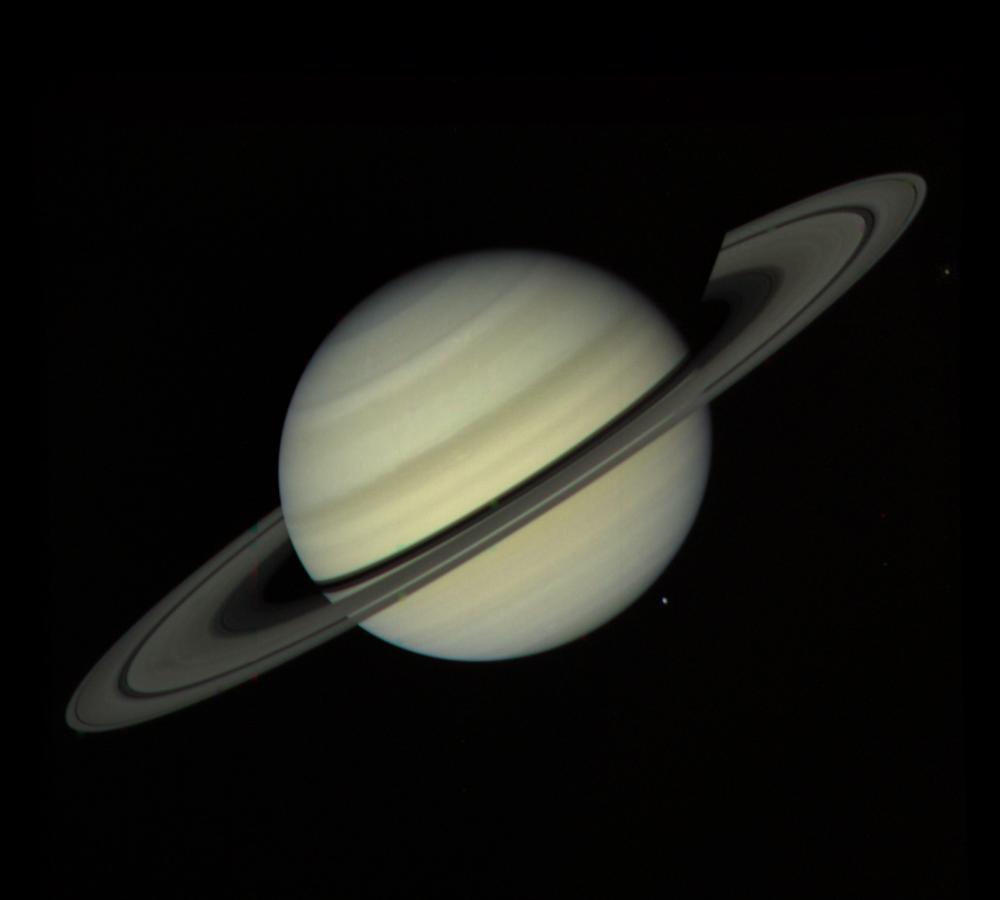 slide3 ==> 1.3: Saturn has huge and prominent rings, and faint bands in the atmosphere due to coloured clouds (NASA)
slide3 ==> 1.3: Saturn has huge and prominent rings, and faint bands in the atmosphere due to coloured clouds (NASA)
 slide4 ==> 1.4: Dione is one of five large moons of Saturn and has a fairly cratered surface (NASA)
slide4 ==> 1.4: Dione is one of five large moons of Saturn and has a fairly cratered surface (NASA)
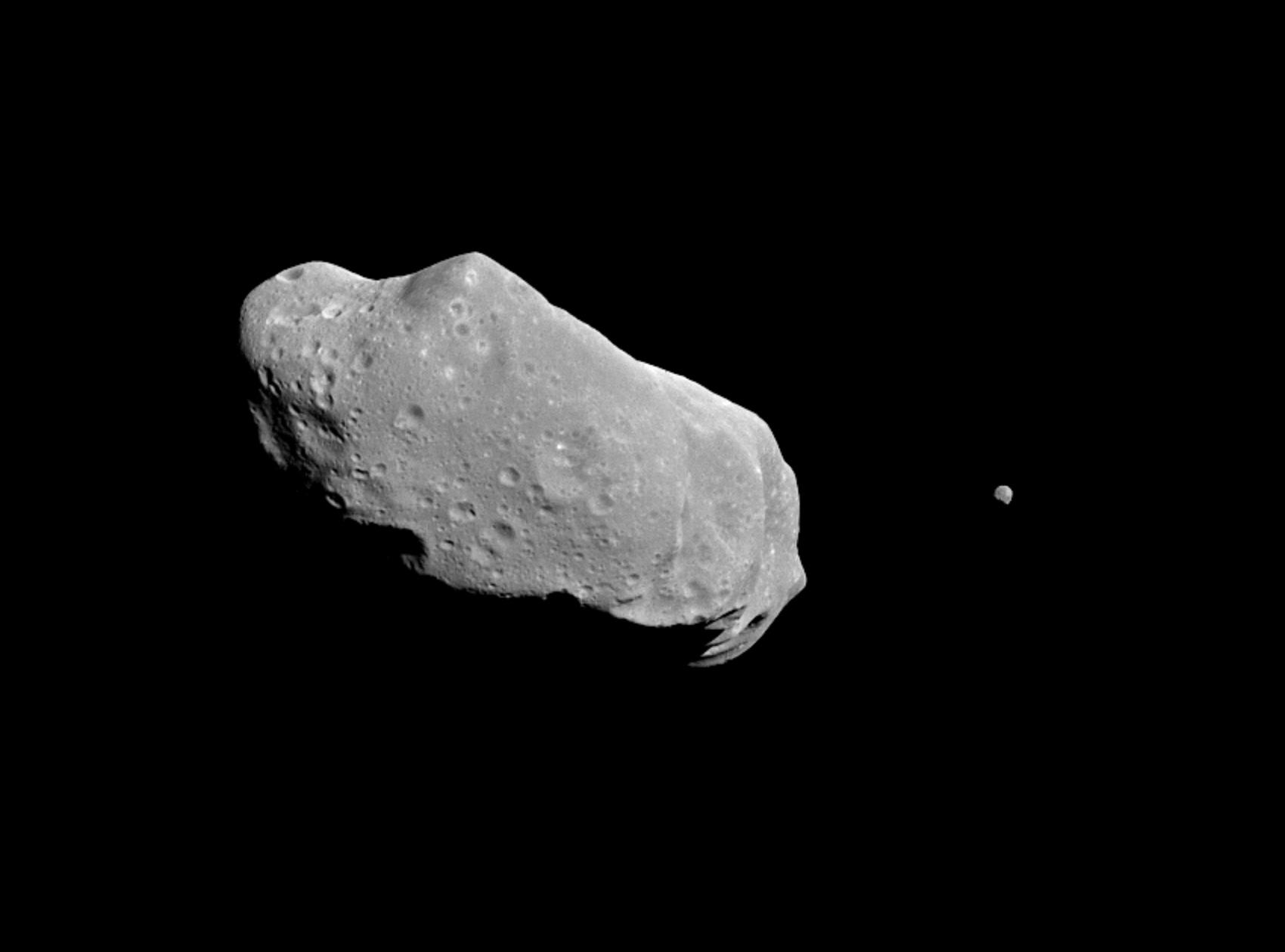 slide5 ==> 1.5: The heavily cratered asteroid Ida and its moon Dactyl (tiny dot at right) from the Galileo probe (NASA)
slide5 ==> 1.5: The heavily cratered asteroid Ida and its moon Dactyl (tiny dot at right) from the Galileo probe (NASA)
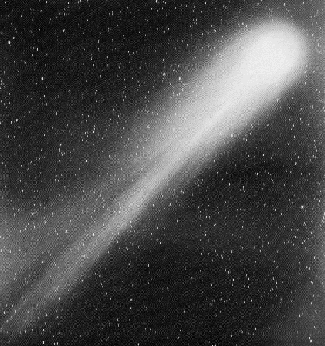 slide6 ==> 1.6: The coma and inner tail of Comet Halley, seen from Earth during its apparition in 1986 (NASA)
slide6 ==> 1.6: The coma and inner tail of Comet Halley, seen from Earth during its apparition in 1986 (NASA)
 slide7 ==> 1.7: As a ship leaves the coast, the low parts of the coast are blocked from view by Earth's curvature
slide7 ==> 1.7: As a ship leaves the coast, the low parts of the coast are blocked from view by Earth's curvature
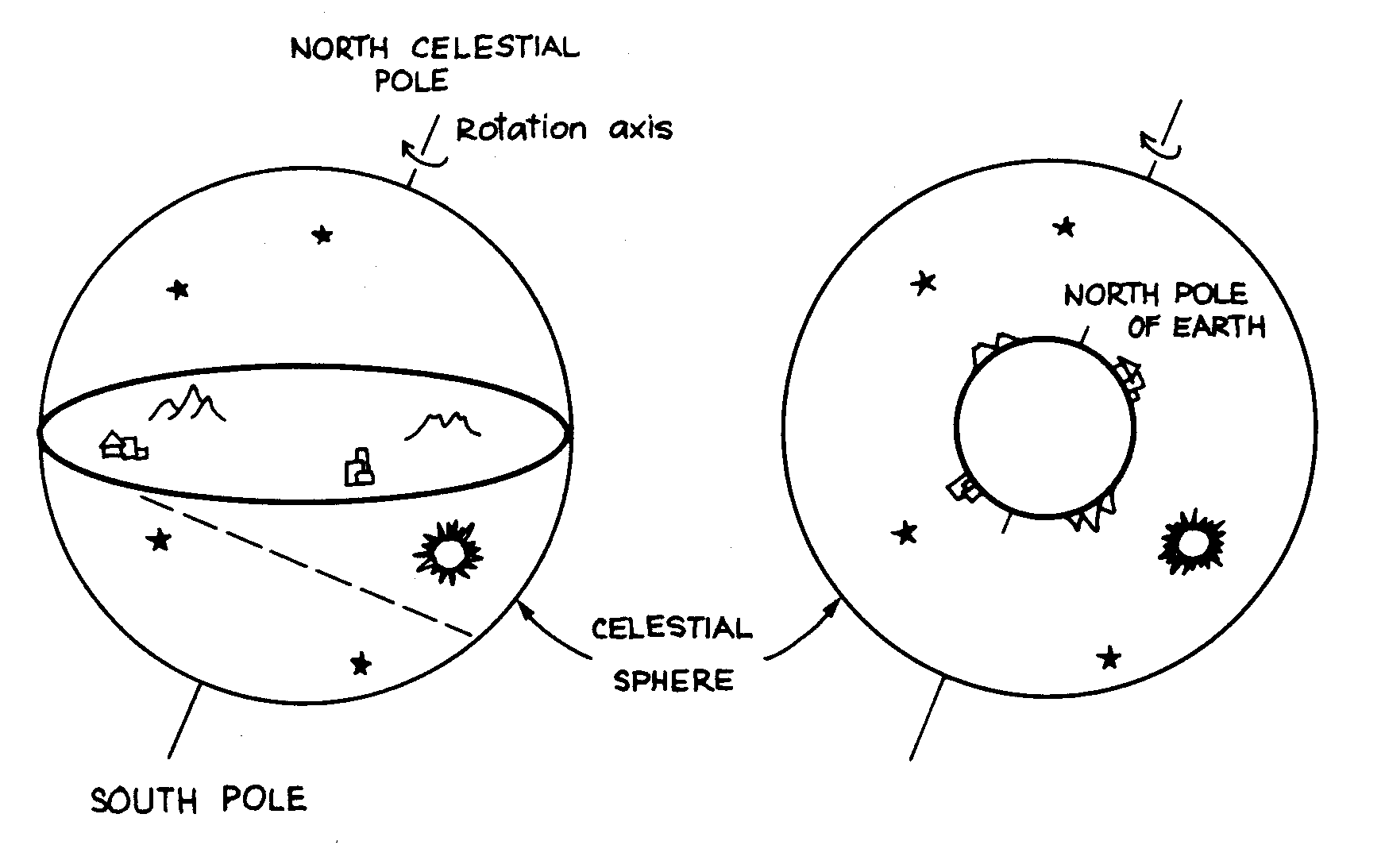 slide8 ==> 1.8: Visible constellations are the same from everywhere on a flat Earth (left) but not from a spherical one
slide8 ==> 1.8: Visible constellations are the same from everywhere on a flat Earth (left) but not from a spherical one
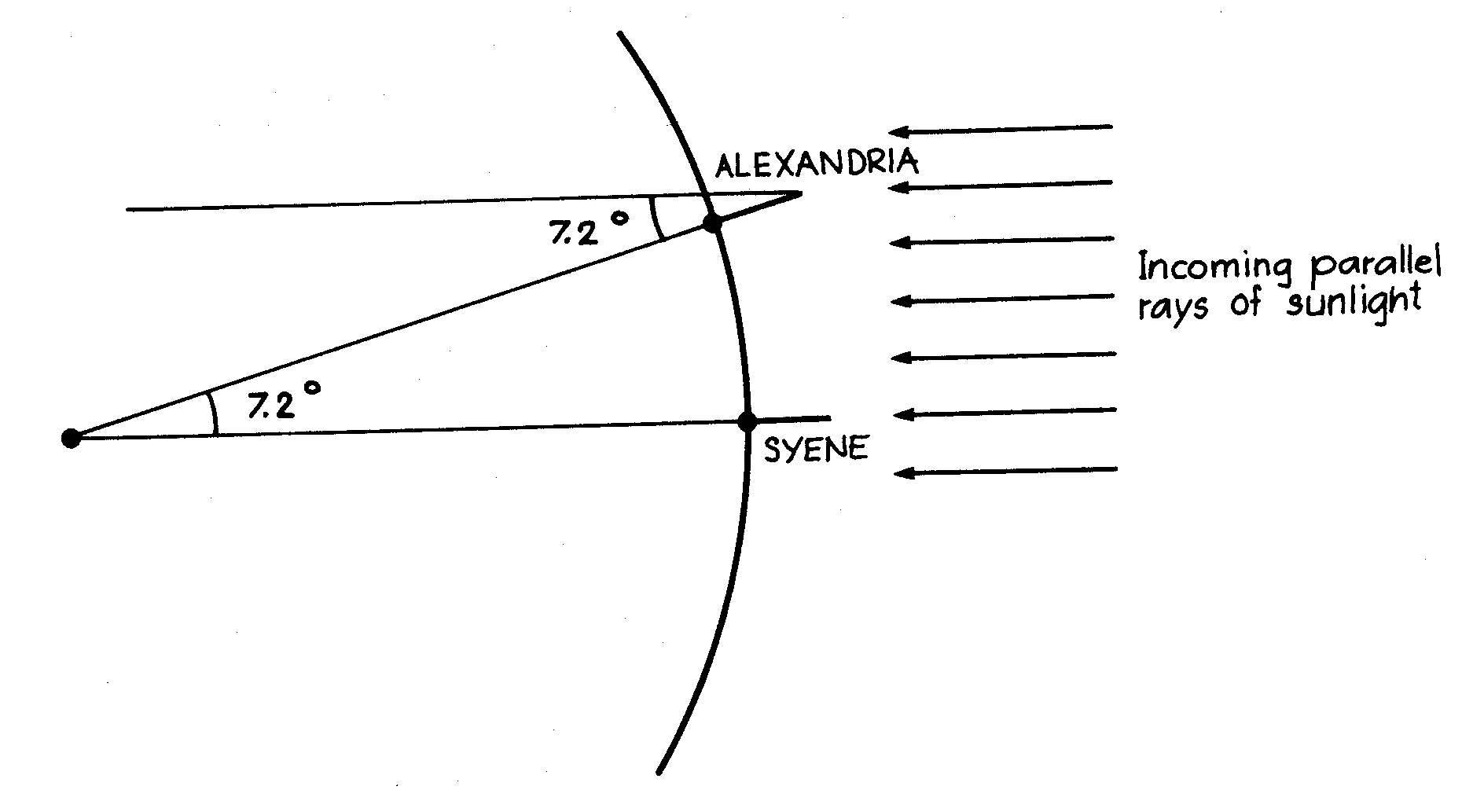 slide9 ==> 1.9: Eratosthenes' method of measuring the circumference of the Earth
slide9 ==> 1.9: Eratosthenes' method of measuring the circumference of the Earth
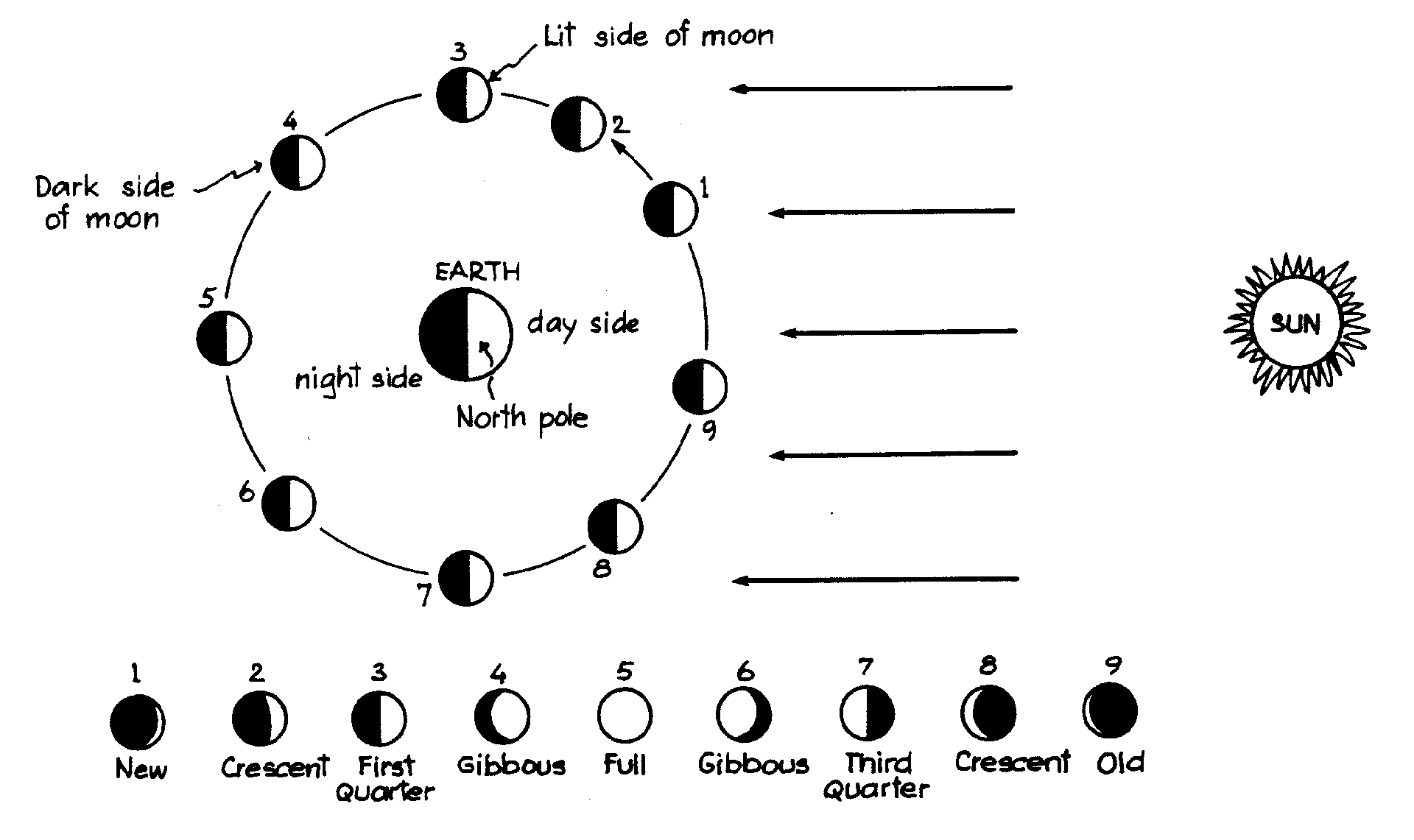 slide10 ==> 1.10: The phases of the Moon result from our varying view of a sphere lit by the Sun on one side
slide10 ==> 1.10: The phases of the Moon result from our varying view of a sphere lit by the Sun on one side
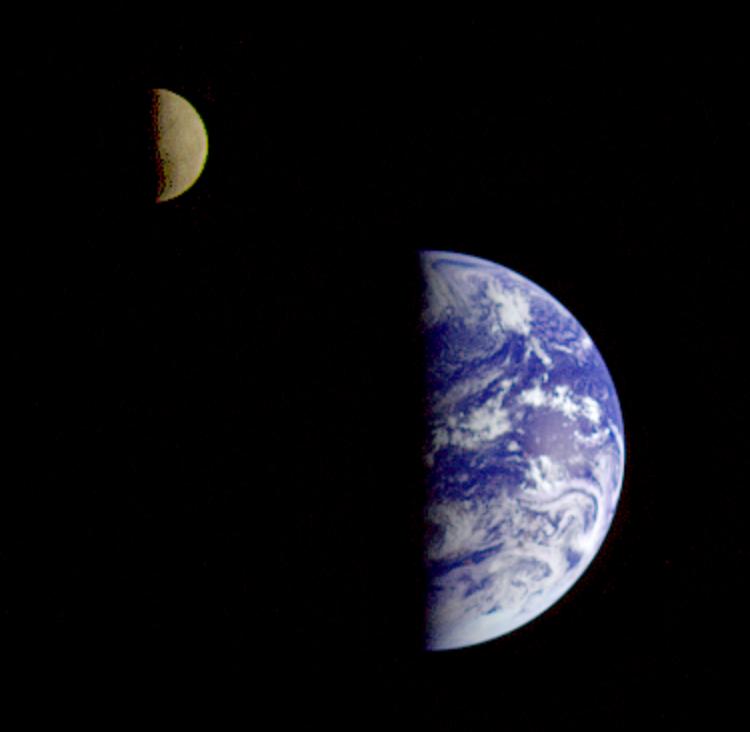 slide11 ==> 1.11: Solar illumination of the Earth and Moon seen from the Galileo probe
slide11 ==> 1.11: Solar illumination of the Earth and Moon seen from the Galileo probe
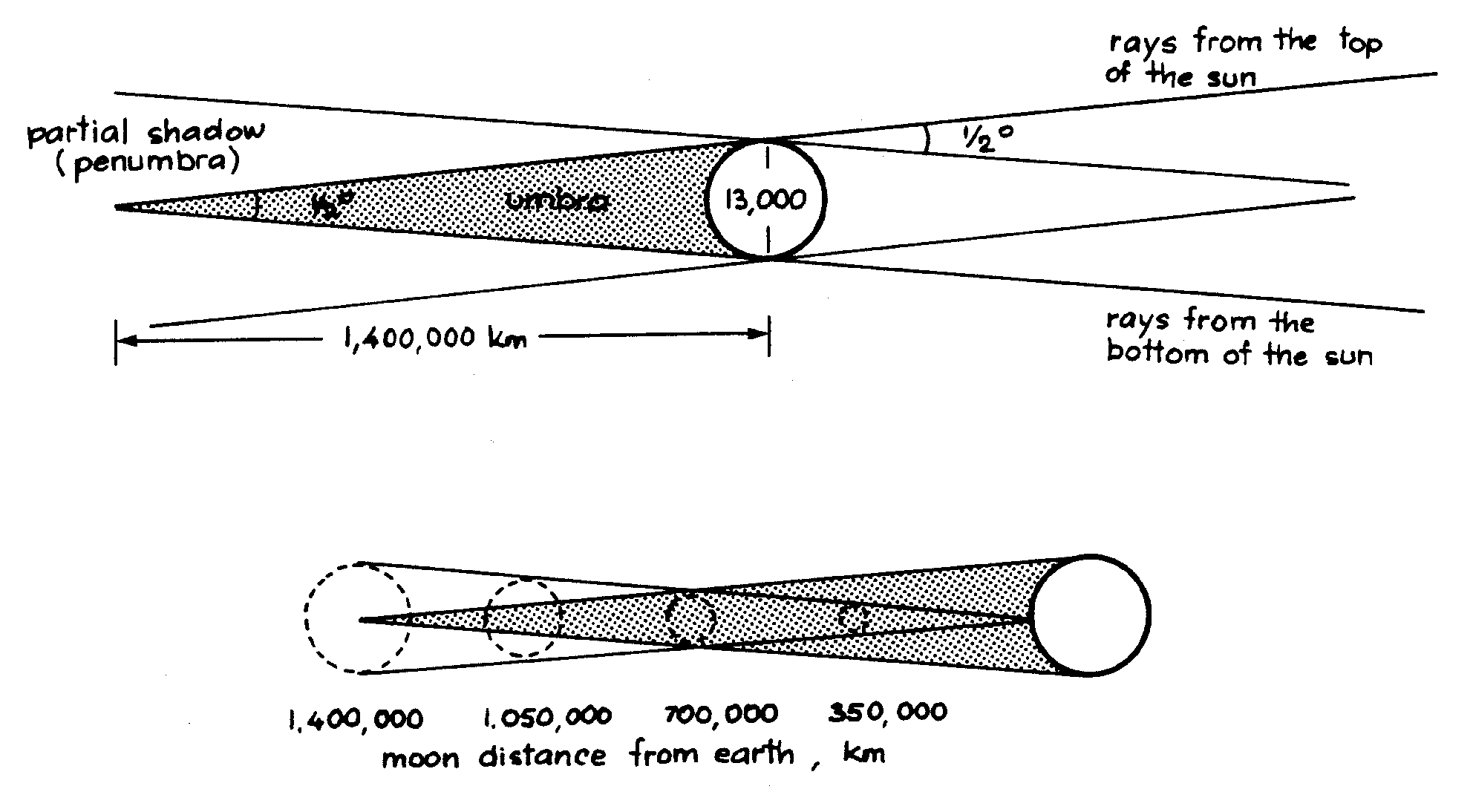 slide12 ==> 1.12: Aristarchos' method of estimating the distance from the Earth to the Moon
slide12 ==> 1.12: Aristarchos' method of estimating the distance from the Earth to the Moon
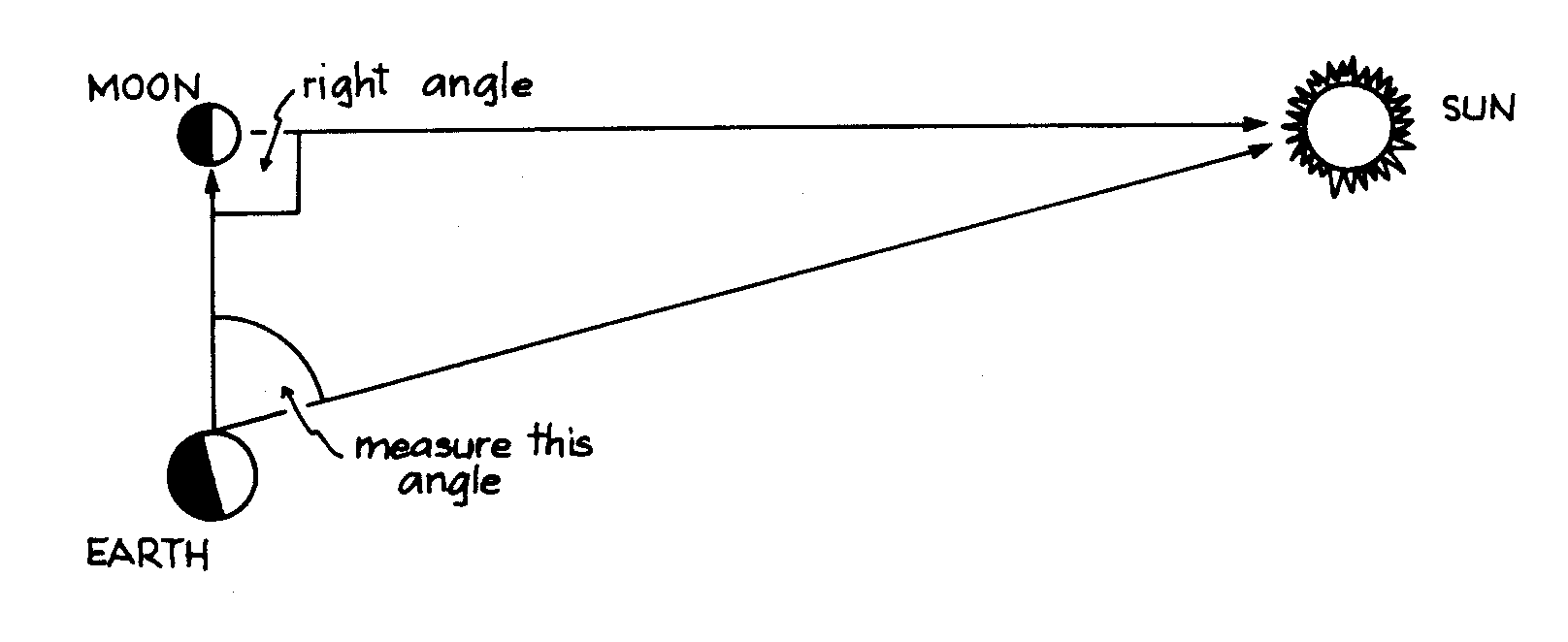 slide13 ==> 1.13: Aristarchos' method of measuring the distance from the Earth to the Sun
slide13 ==> 1.13: Aristarchos' method of measuring the distance from the Earth to the Sun
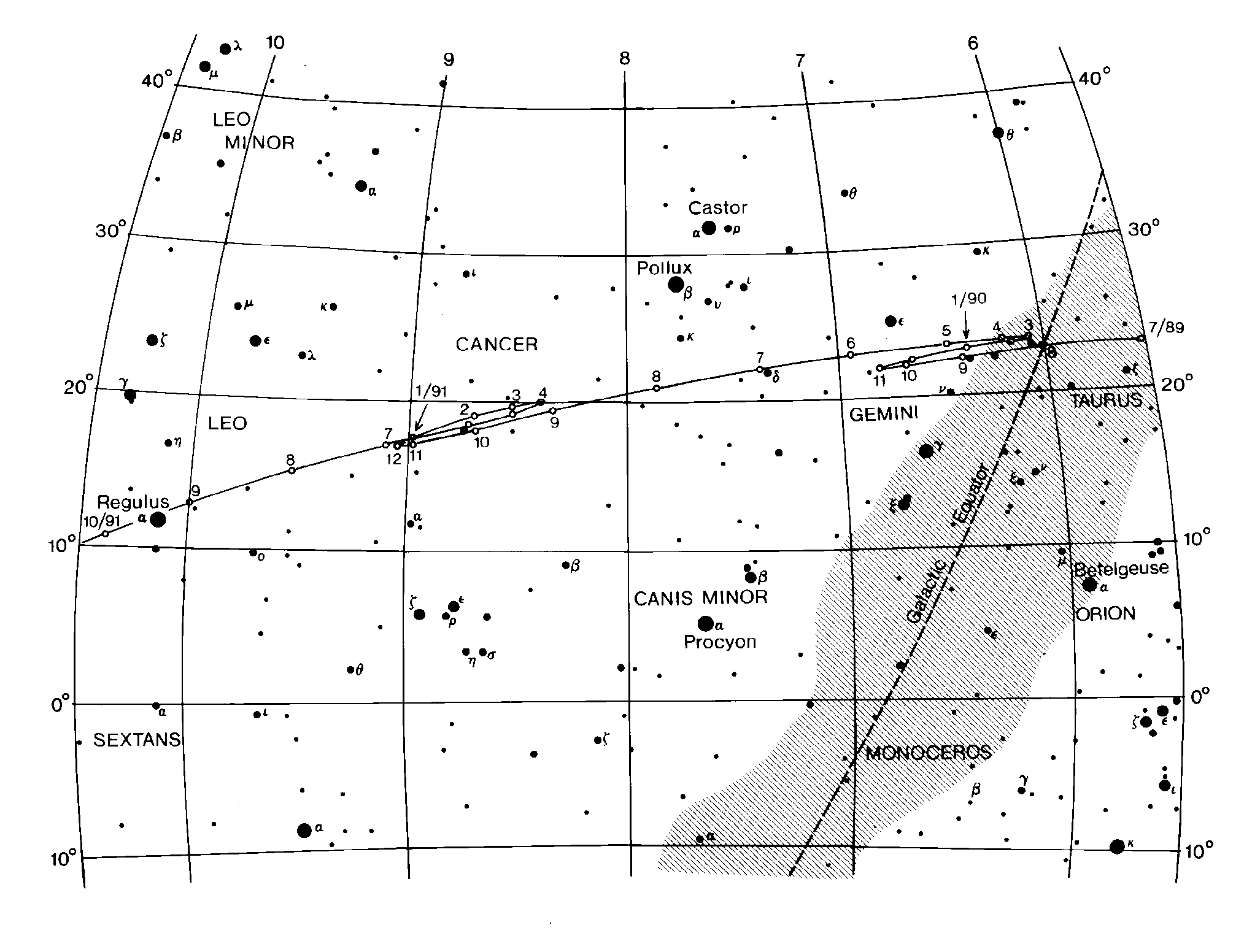 slide14 ==> 1.14: The path of Jupiter on the sky during two years, showing episodes of retrograde movement
slide14 ==> 1.14: The path of Jupiter on the sky during two years, showing episodes of retrograde movement
 slide15 ==> 1.15: Ptolemy's explanation of planetary motion using the devices of the deferent, epicycle, and equant
slide15 ==> 1.15: Ptolemy's explanation of planetary motion using the devices of the deferent, epicycle, and equant
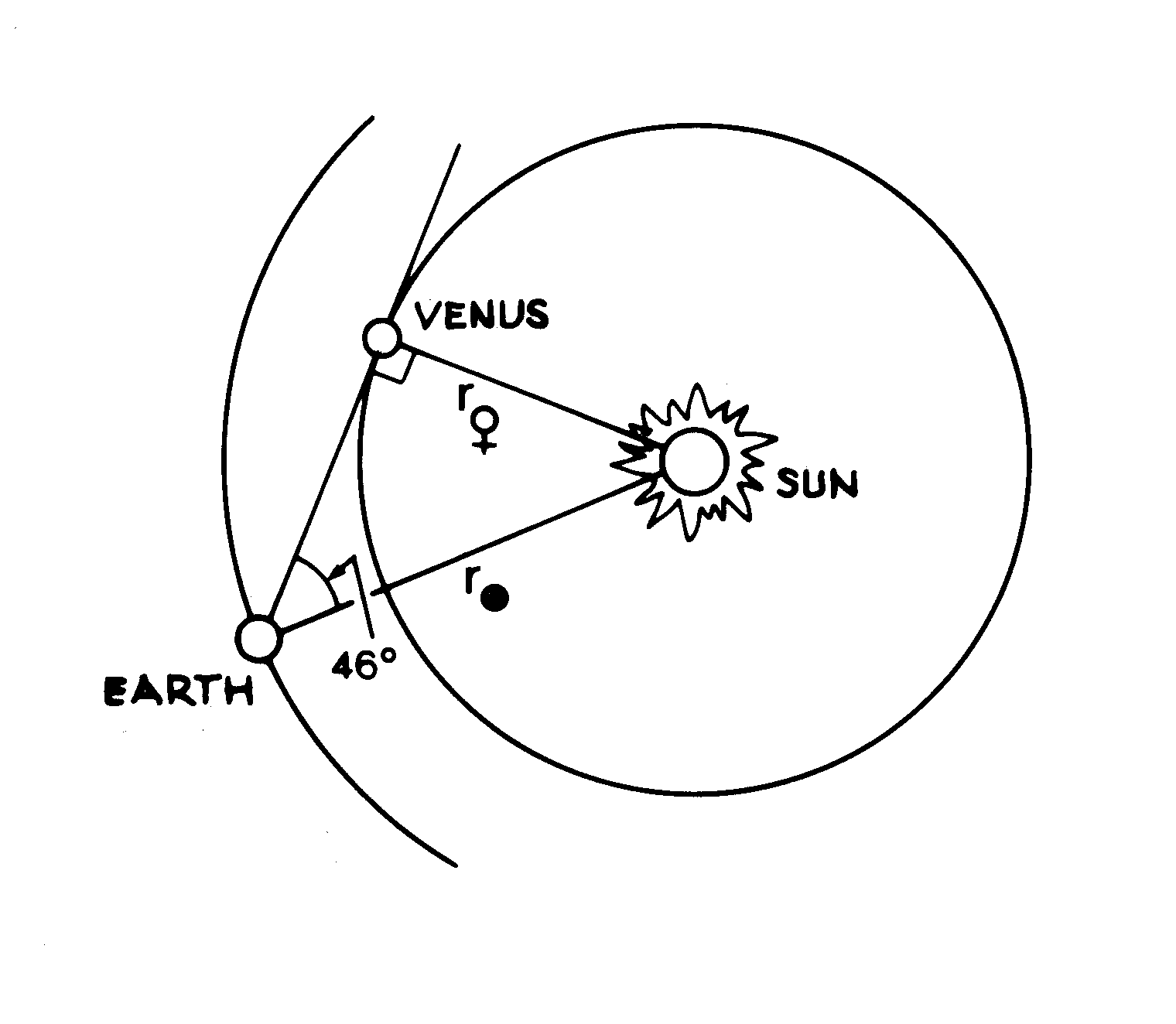 slide16 ==> 1.16: The basic method of measuring the orbit diameter of Venus on the heliocentric theory
slide16 ==> 1.16: The basic method of measuring the orbit diameter of Venus on the heliocentric theory
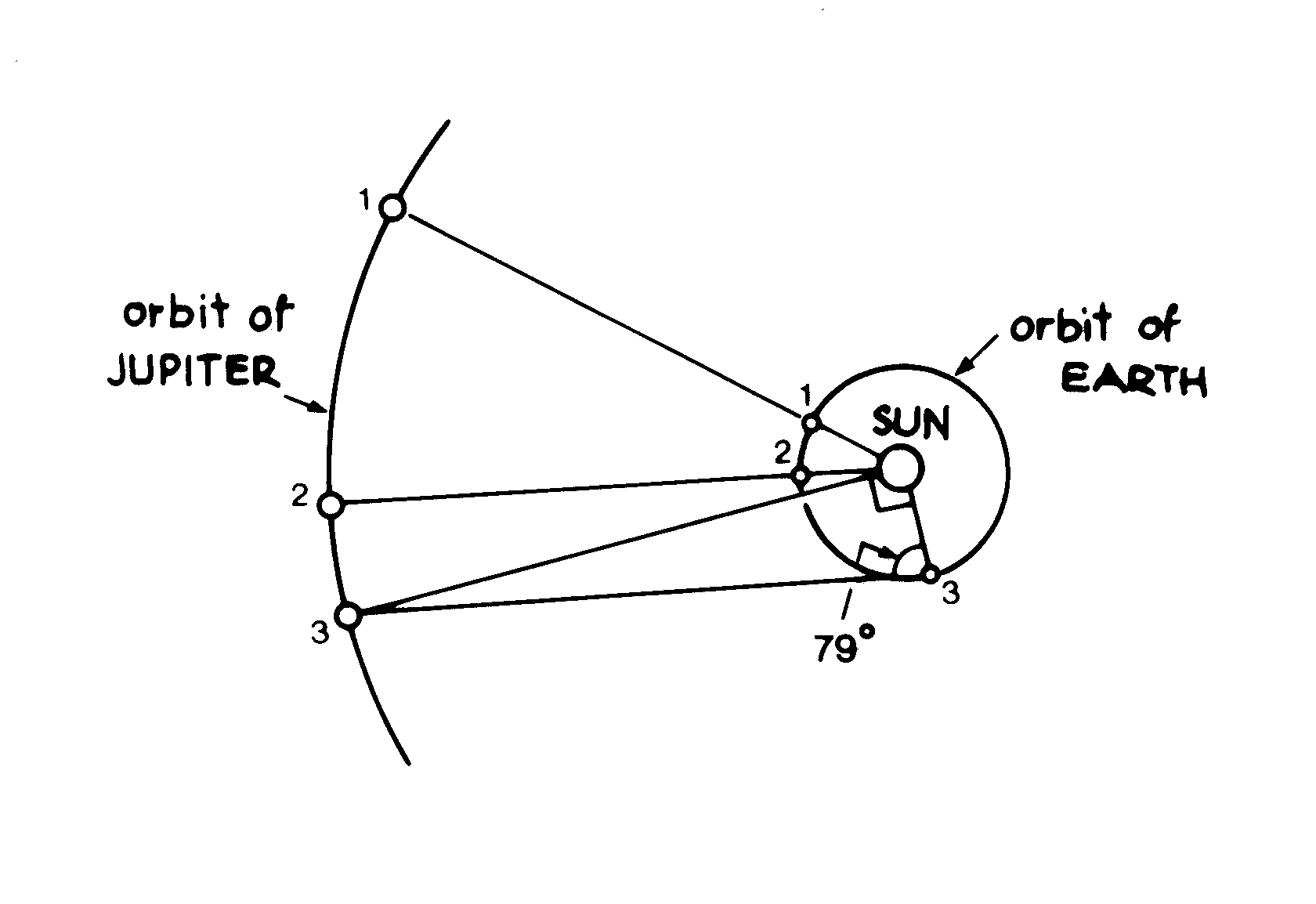 slide17 ==> 1.17: A simple method for measuring the size of Jupiter's orbit on the heliocentric theory
slide17 ==> 1.17: A simple method for measuring the size of Jupiter's orbit on the heliocentric theory
 slide18 ==> 1.18: Construction of an ellipse with a pencil, string, and two pins
slide18 ==> 1.18: Construction of an ellipse with a pencil, string, and two pins
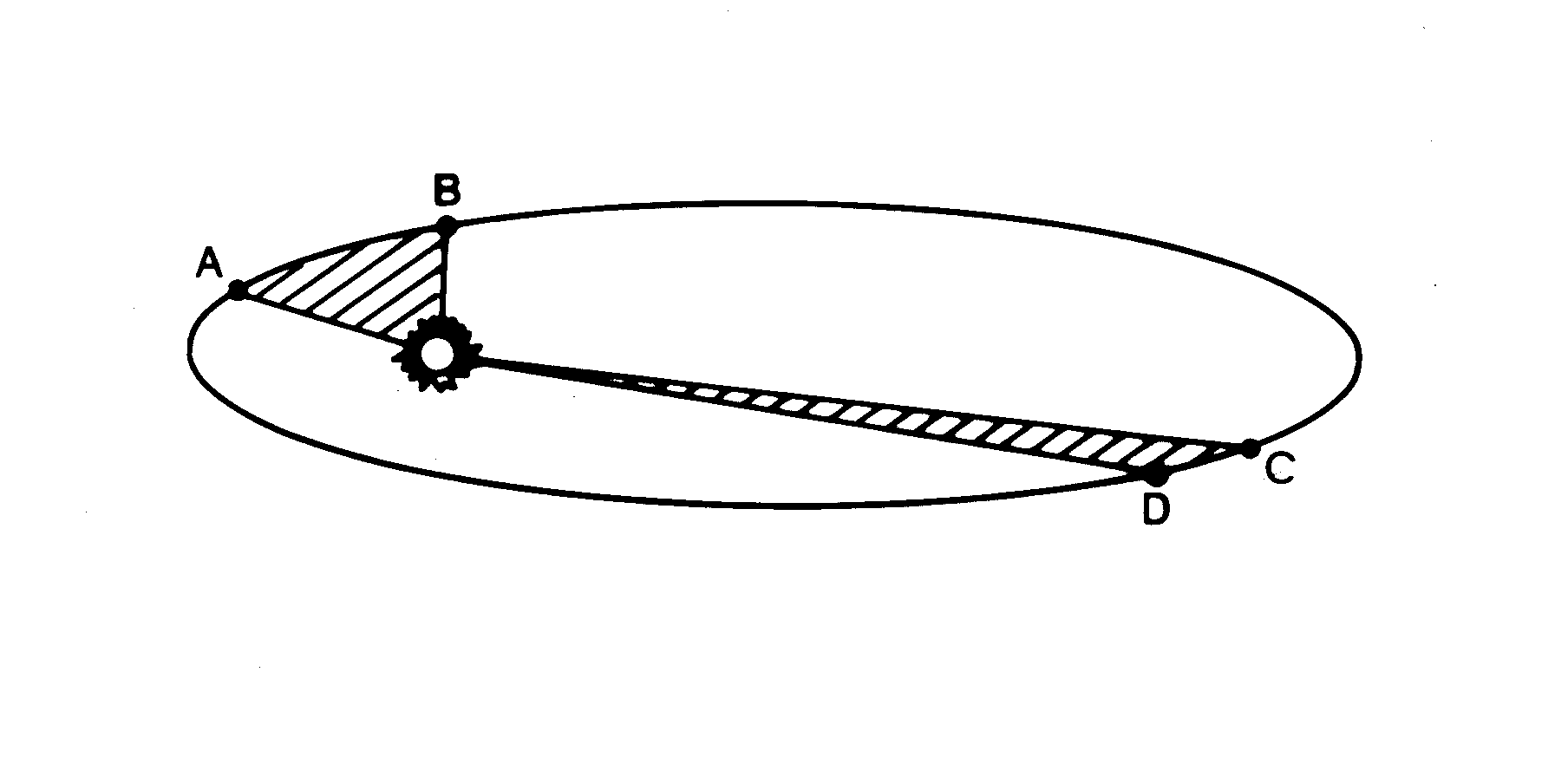 slide19 ==> 1.19: Kepler showed that planets move in such a way as to sweep out equal areas in equal times
slide19 ==> 1.19: Kepler showed that planets move in such a way as to sweep out equal areas in equal times
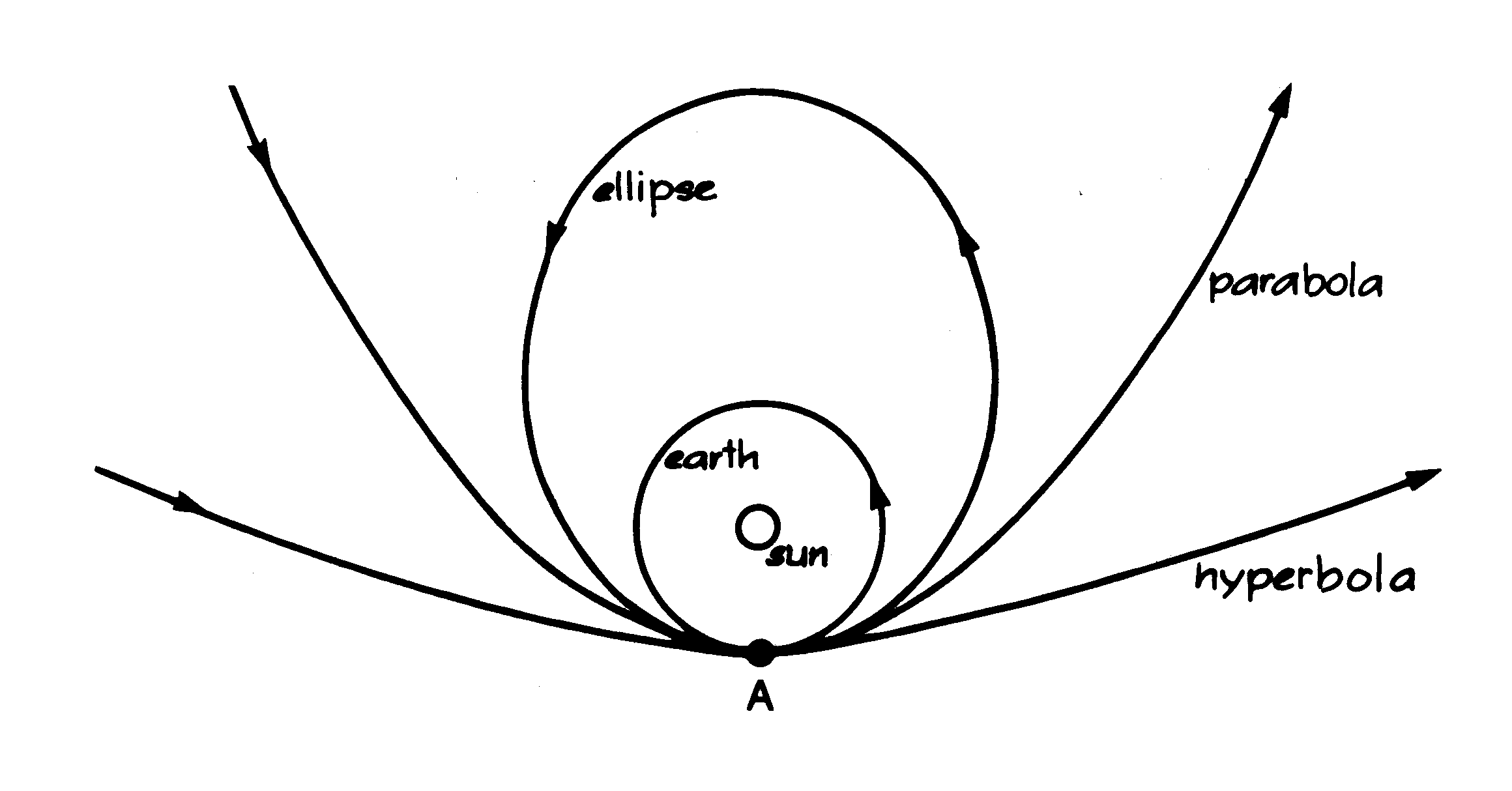 slide20 ==> 1.20: Orbits of bodies that reach point A with velocities of 30 km/s (Earth), 37 km/s, 42 km/s, and 60 km/s
slide20 ==> 1.20: Orbits of bodies that reach point A with velocities of 30 km/s (Earth), 37 km/s, 42 km/s, and 60 km/s
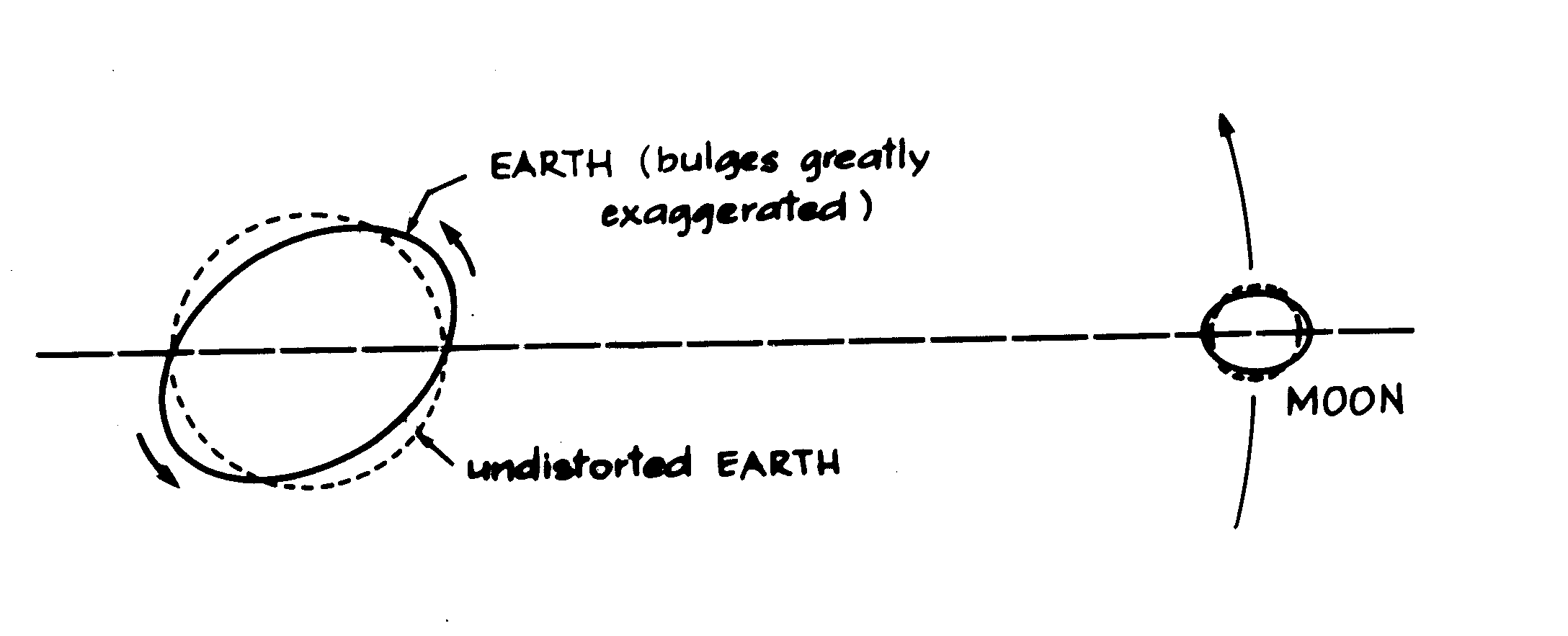 slide21 ==> 1.21: Bulges are raised on the Earth and the Moon by tides (greatly exaggerated here)
slide21 ==> 1.21: Bulges are raised on the Earth and the Moon by tides (greatly exaggerated here)
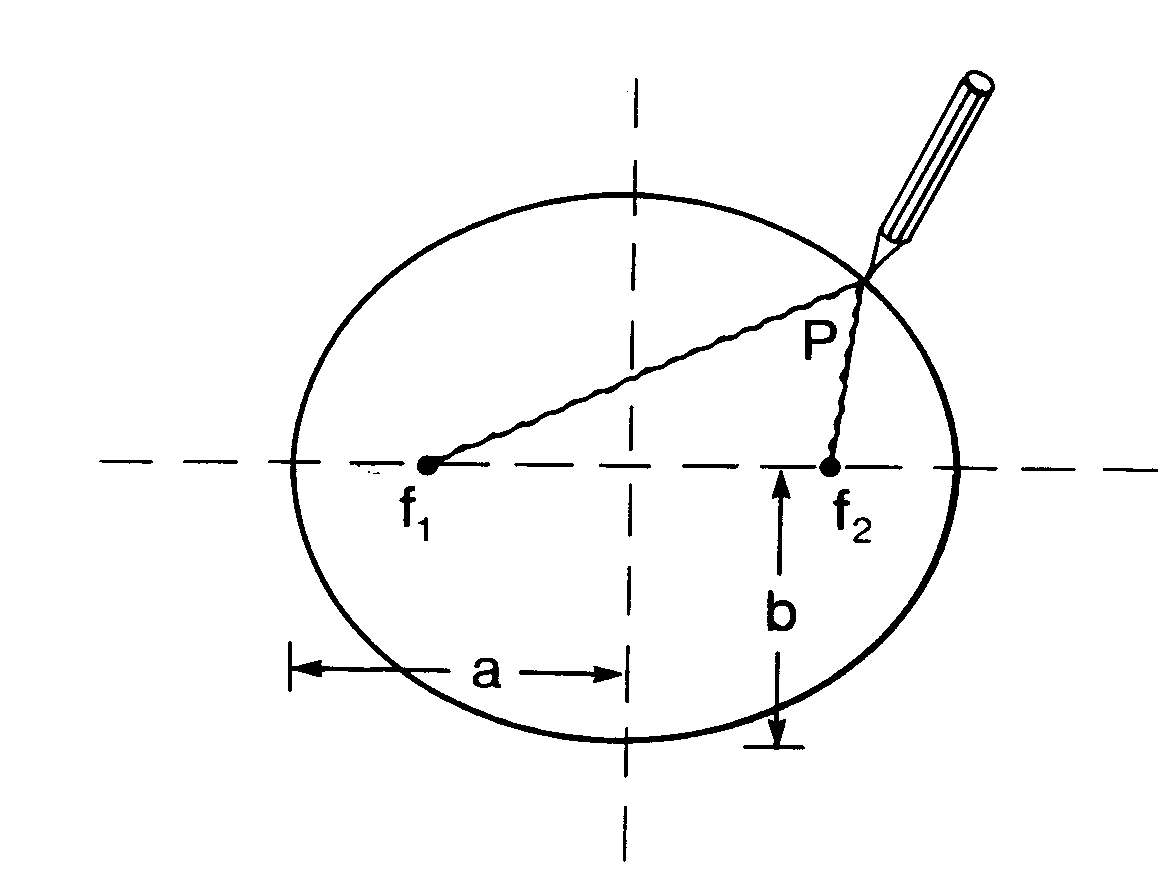 slide22 ==> 1.22: The quantities a and b are the semi-major and semi-minor axes of an ellipse whose foci are at f1 and f2
slide22 ==> 1.22: The quantities a and b are the semi-major and semi-minor axes of an ellipse whose foci are at f1 and f2